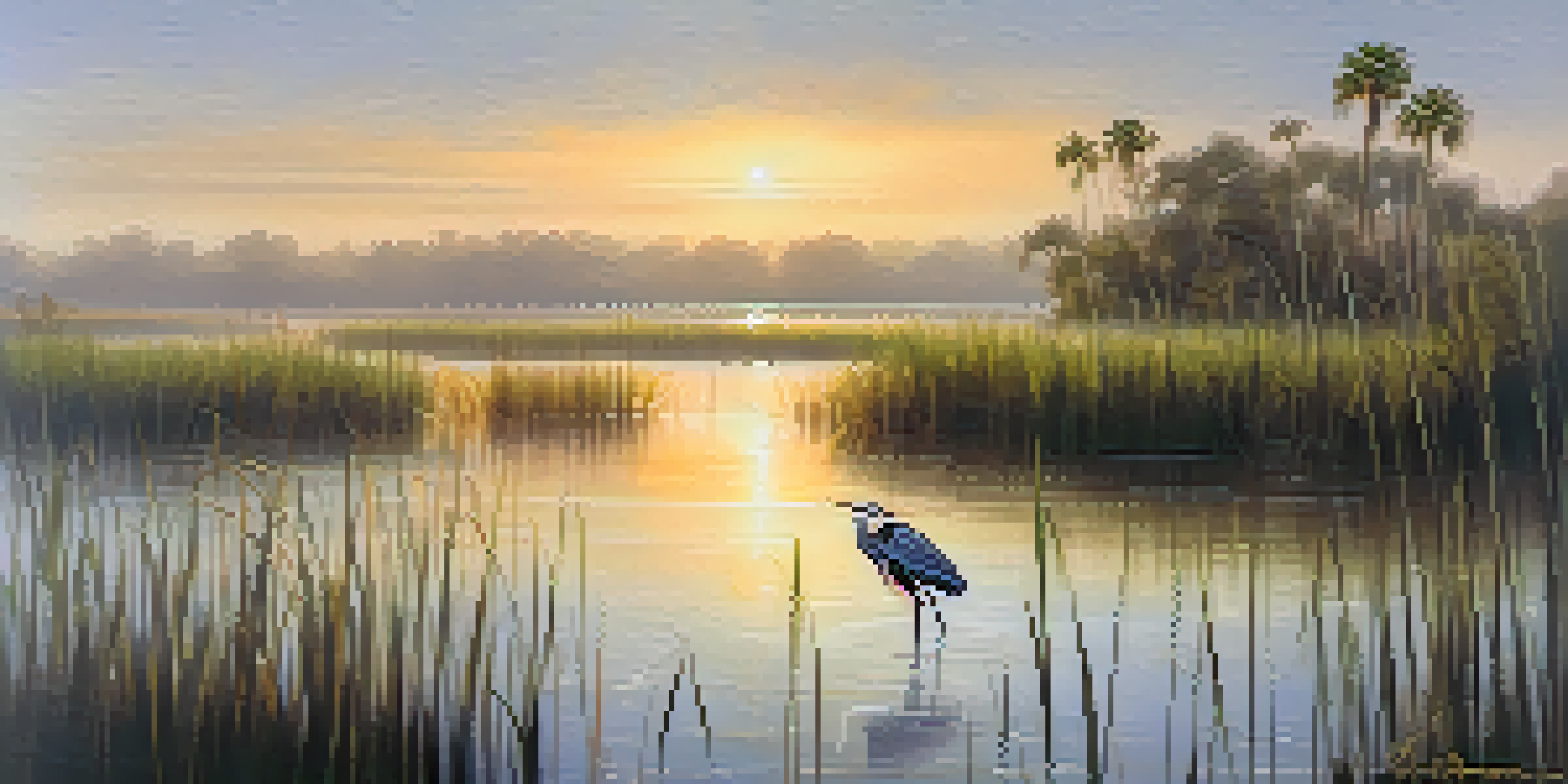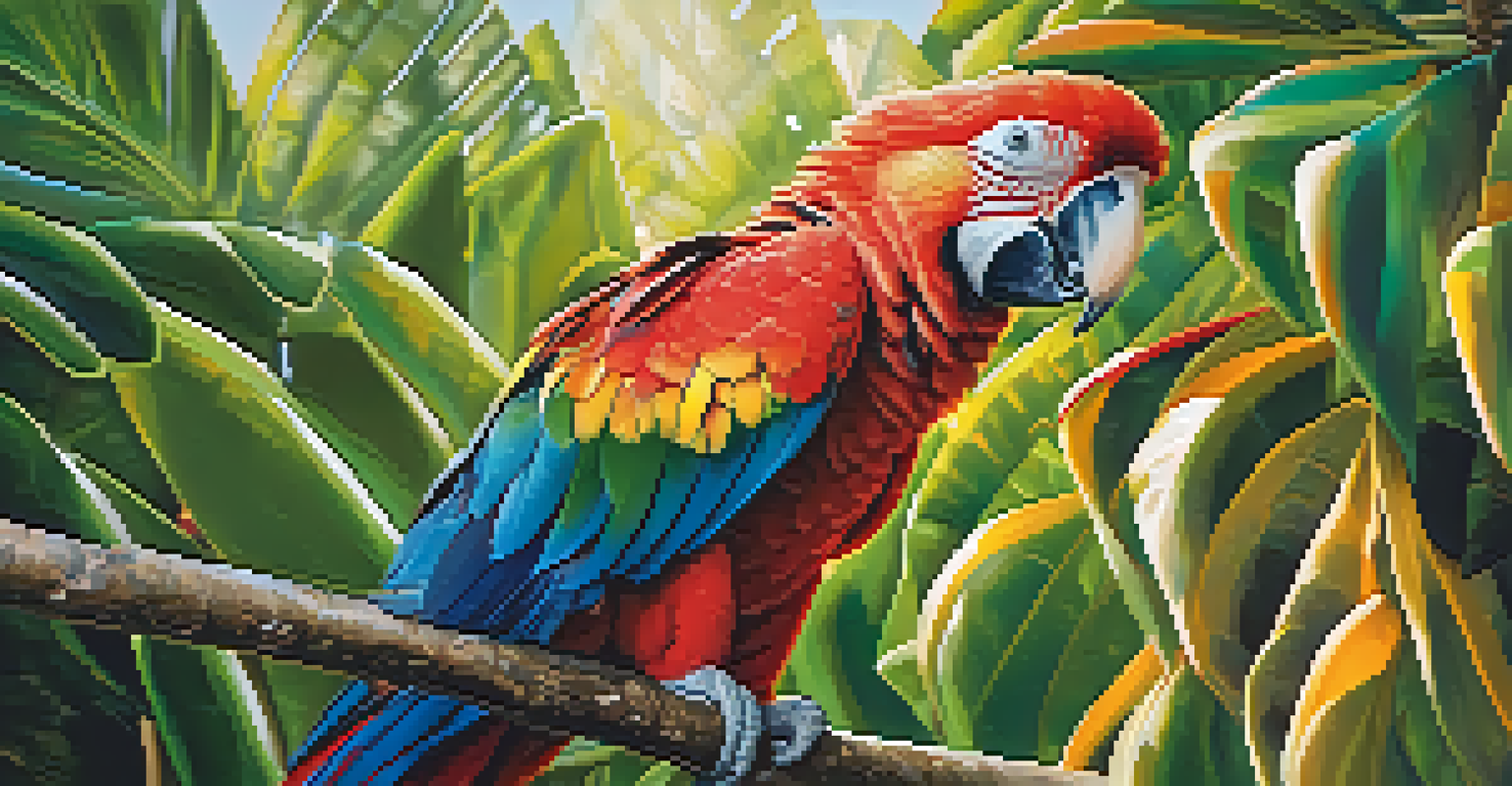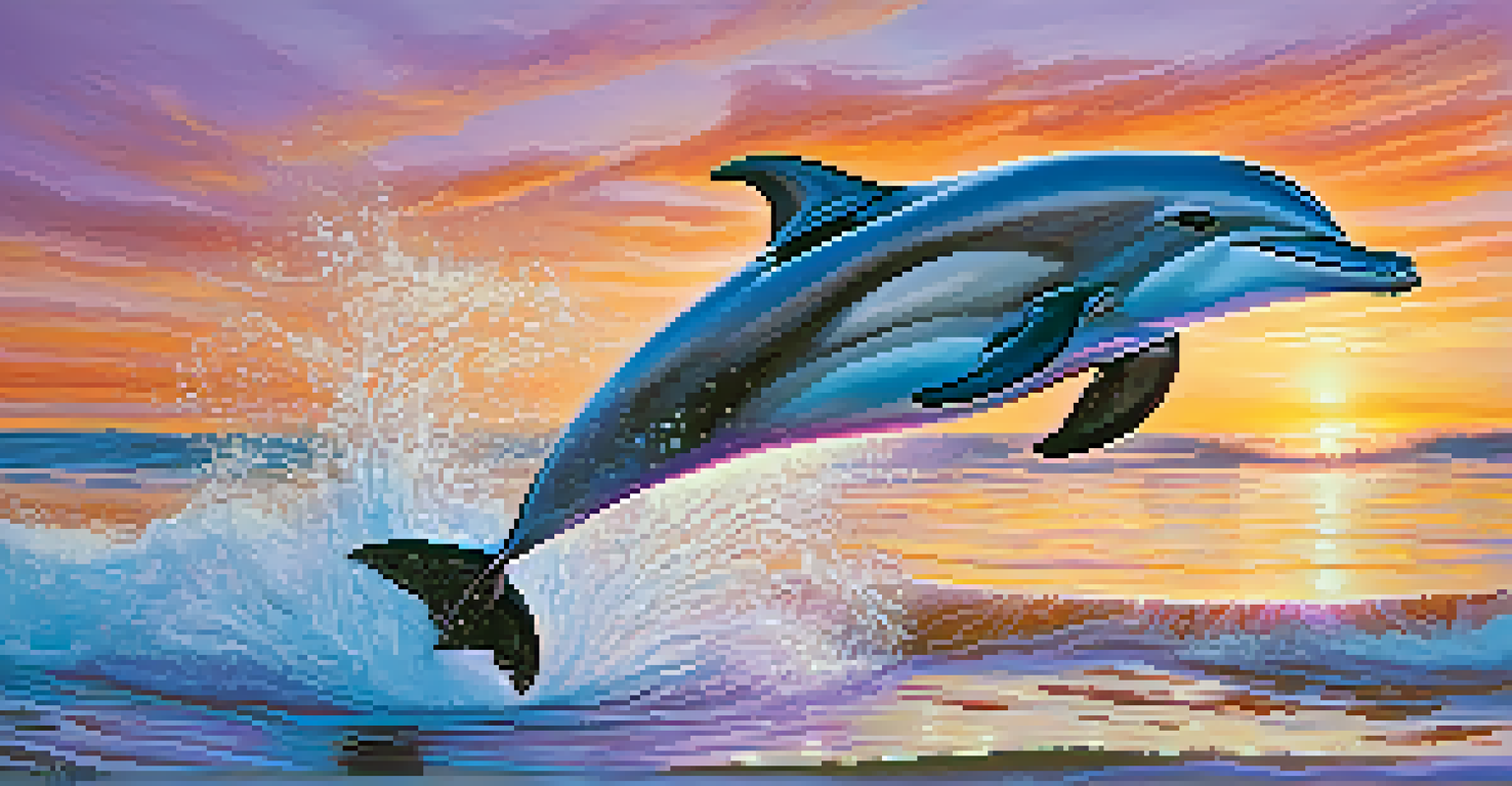Techniques for Capturing Stunning Wildlife Photos in Florida

Understand Your Equipment for Wildlife Photography
Before you head out into the wild, it’s crucial to familiarize yourself with your camera. Understanding settings like shutter speed, aperture, and ISO can dramatically affect your photos. For instance, a fast shutter speed is essential for freezing the action of a bird in flight, while a lower aperture can create a beautiful blurred background.
In every walk with nature one receives far more than he seeks.
If you’re using a DSLR or mirrorless camera, don’t forget to experiment with different lenses. Telephoto lenses, often ranging from 70-300mm, allow you to photograph wildlife from a distance without disturbing them. This is particularly useful in Florida, where animals might be skittish around humans.
Finally, always carry extra batteries and memory cards. Wildlife photography can lead to unexpected moments, and you wouldn’t want to miss that perfect shot because your camera ran out of juice.
Choose the Right Time of Day for Photography
Lighting can make or break a wildlife photo, and the best times to shoot are typically during the golden hours—early morning and late afternoon. During these times, the soft, warm light creates stunning images and brings out the vibrant colors of Florida's wildlife.

Midday sun can be harsh and create unflattering shadows, so if you find yourself out during this time, consider seeking shaded areas or focusing on close-up shots. This is where the details of feathers or fur can shine, even if the overall light isn't ideal.
Master Your Camera Settings
Understanding key camera settings like shutter speed, aperture, and ISO is essential for capturing stunning wildlife photos.
Additionally, animals are often more active during the cooler parts of the day, making early mornings and evenings prime times for spotting wildlife. Plan your outings around these times to increase your chances of capturing memorable moments.
Scout Locations Known for Rich Wildlife Diversity
Florida is home to diverse ecosystems, from wetlands to forests, each teeming with unique wildlife. Before heading out, research locations like the Everglades, Big Cypress National Preserve, and various state parks. Each offers a unique backdrop for your photography.
The camera is an instrument that teaches people how to see without a camera.
Consider joining local wildlife tours or workshops that can provide insights into the best spots for observation and photography. Local guides often know the best times and places to find specific animals, saving you time and increasing your chances of a successful shoot.
Remember to respect wildlife and their habitats while exploring. Staying on designated paths and maintaining a safe distance from animals not only protects them but also helps you capture more natural behaviors in your photos.
Patience is Key: Wait for the Right Moment
One of the most vital techniques in wildlife photography is patience. Animals often have their routines, and waiting quietly can yield some incredible shots. Whether you’re sitting near a nest or observing a feeding area, stillness can lead to rewarding moments.
When you find a subject that interests you, take a moment to observe its behavior. This not only enhances your understanding of the animal but also allows you to anticipate movements, helping you capture that perfect shot as it unfolds.
Choose Optimal Shooting Times
The best lighting for wildlife photography occurs during the golden hours of early morning and late afternoon.
Sometimes, you might need to wait for hours, but those moments of silence can turn into breathtaking photographs that tell a story. Embrace the stillness, and remember that the excitement of wildlife photography often lies in the unexpected.
Use Composition Techniques for Striking Images
Composition is a crucial aspect of any photography, and wildlife photography is no exception. The rule of thirds is a classic technique where you divide your frame into thirds, both horizontally and vertically. Placing your subject off-center can create a more dynamic and engaging image.
Additionally, try different angles to find the most compelling perspective. Whether it’s getting low to the ground or capturing an aerial view, varying your approach can lead to unique and breathtaking shots that stand out.
Don’t forget about negative space, which can enhance your composition by allowing your subject to breathe within the frame. This technique can be particularly effective in Florida's vast landscapes, showcasing the beauty of both the wildlife and its environment.
Consider the Importance of Backgrounds
A cluttered background can distract from your subject, so pay attention to what’s behind the animal you’re photographing. Choose locations with clean, unobtrusive backdrops to make your subject pop. This is especially important in Florida, where lush vegetation can sometimes overwhelm a scene.
Using a wide aperture can help blur the background, isolating your subject and drawing the viewer's eye directly to it. This technique works wonders when photographing birds perched on branches or animals in tall grass.
Respect Wildlife and Their Habitats
Ethical wildlife photography involves maintaining a safe distance and adhering to local regulations to protect animals and their environments.
Moreover, consider the colors in your background. Complementary colors can enhance the overall aesthetic of your shot, while clashing colors might detract from it. By being mindful of your surroundings, you can elevate your wildlife photography significantly.
Practice Ethical Wildlife Photography
Ethical wildlife photography is about respecting the animals and their habitats while capturing stunning images. Always keep a safe distance and avoid disturbing wildlife, especially during nesting or breeding seasons. This not only helps protect the animals but also fosters a more natural environment for your photography.
Be aware of local regulations regarding wildlife observation and photography. Some areas may have guidelines that restrict how close you can get to animals or the types of equipment you can use. Following these rules ensures the safety of both you and the wildlife.

Lastly, consider the impact of your photography. Share your knowledge and passion for wildlife, and encourage others to appreciate and protect Florida's natural beauty. By promoting ethical practices, you contribute to the preservation of these incredible ecosystems.